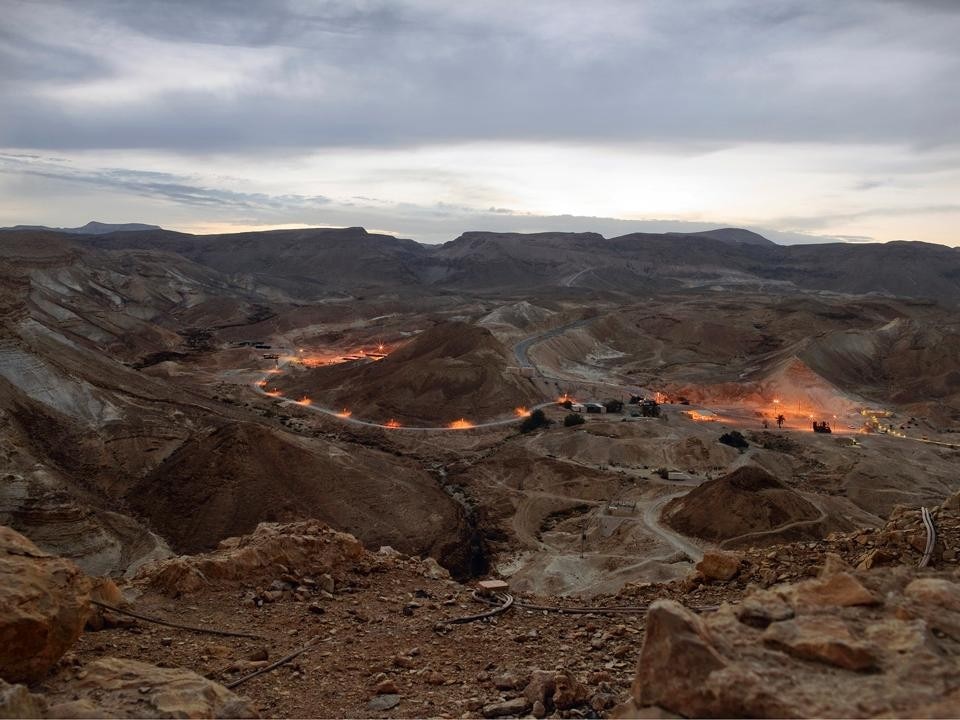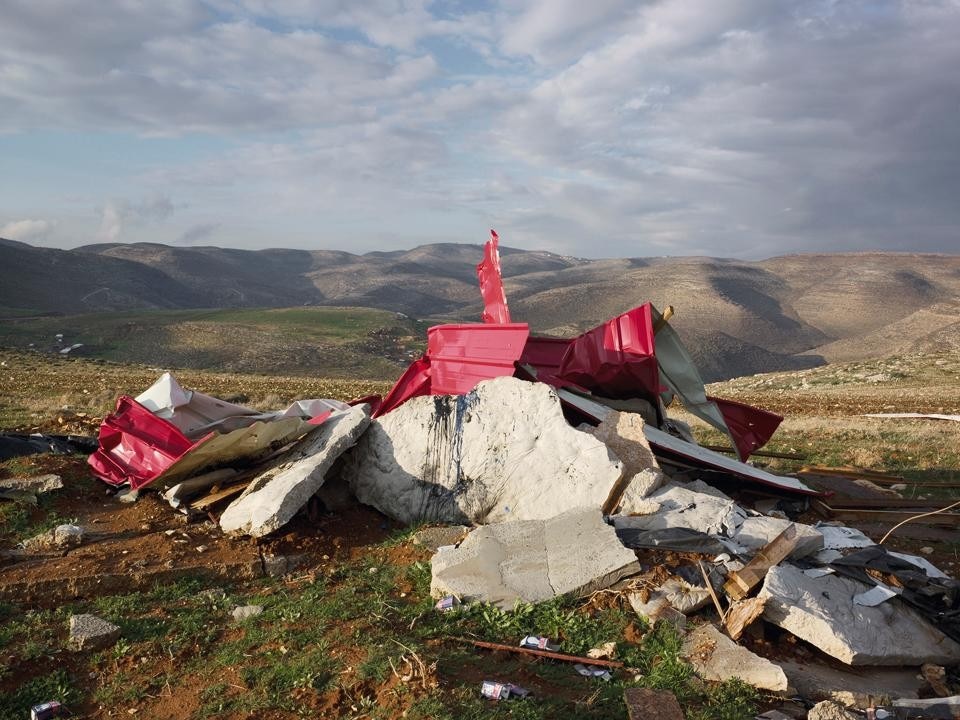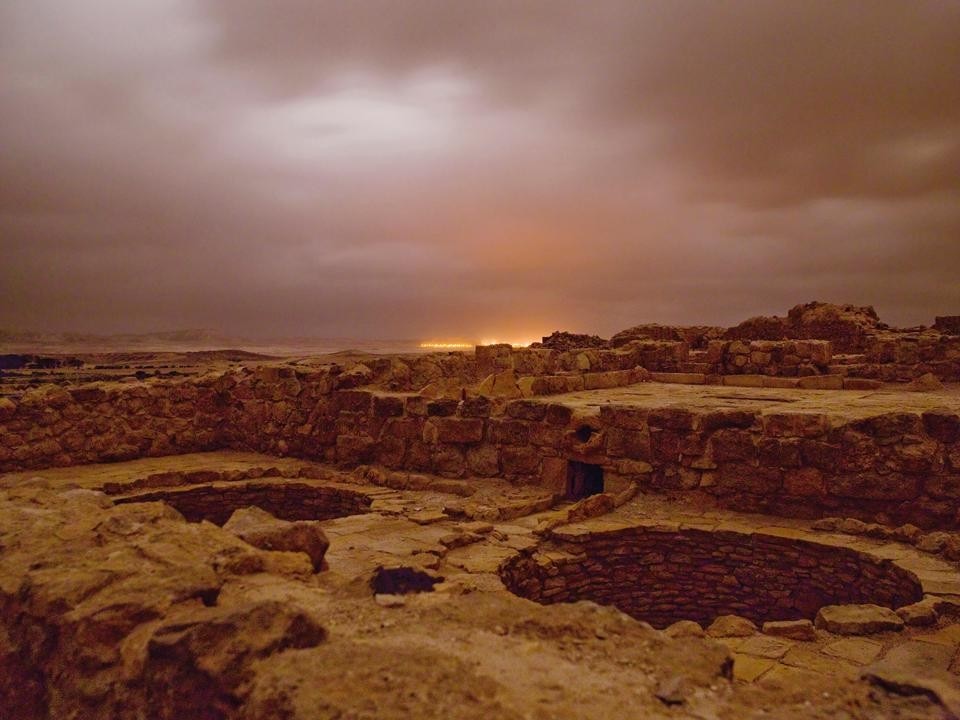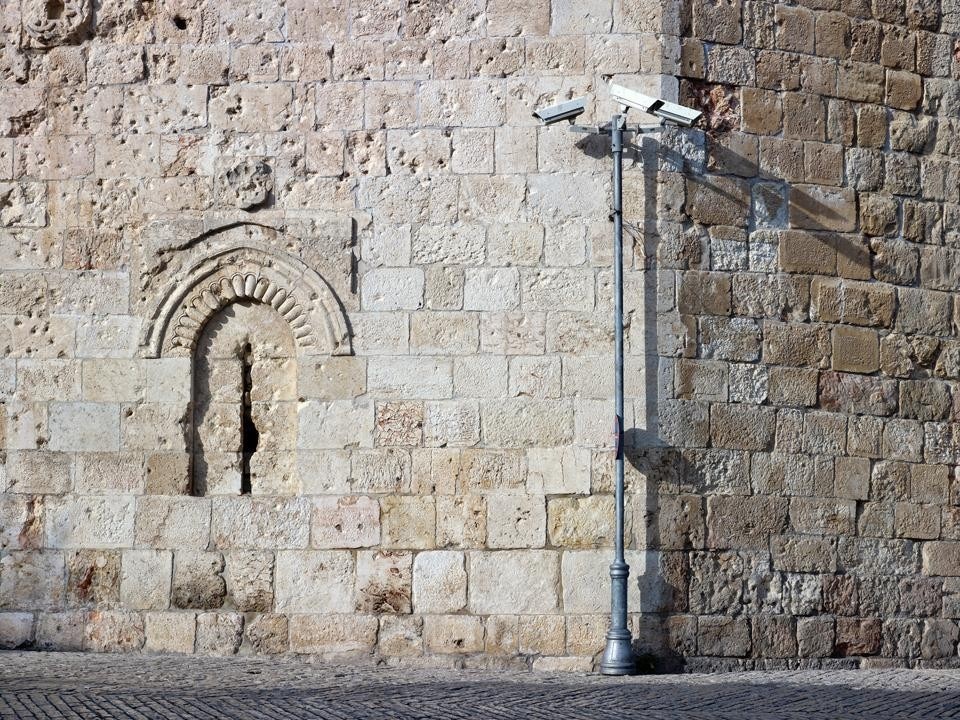Kremer's work illustrates the poetic landscapes and ruins of Israel—beautiful and aesthetically resonant, yet genuinely engaged with the issues of the transience of civilization and the legitimacy of imperialism. The dramatic images in the show date back to ancient civilizations and up through the recent Palestinian conflicts. As in his earlier work, the images seduce and then return to reality with details like surveillance cameras mounted to ancient sacred walls and jagged debris that resembles abstract sculpture.

Above: Shai Kremer, View from Masada. © Shai Kremer; courtesy Julie Saul Gallery, New York.

The accompanying monograph is co-published by Radius Books and Dewi Lewis Publishing, with essays by Ariella Azoulay, Meron Benvenisti, Amiran Oren, Talya Sason, and Anne Wilkes Tucker.
Kremer's work illustrates the poetic landscapes and ruins of Israel—beautiful and aesthetically resonant, yet genuinely engaged with the issues of the transience of civilization and the legitimacy of imperialism.

On view through 15 October, 2011
Julie Saul Gallery
535 West 22nd Street, New York



